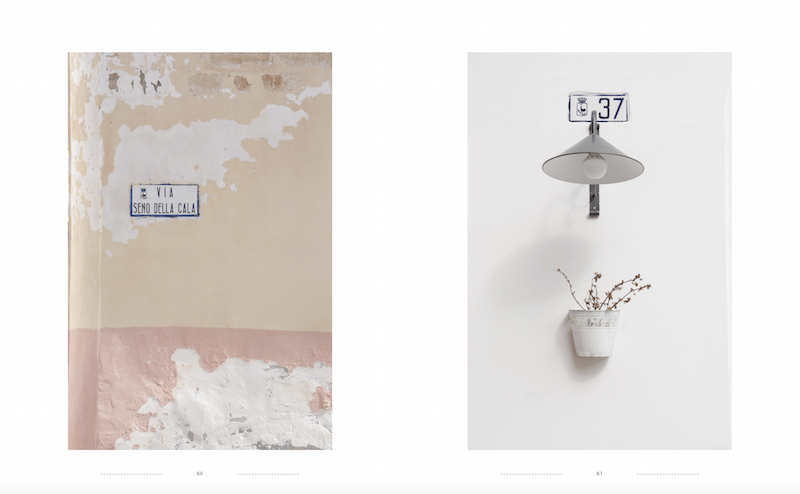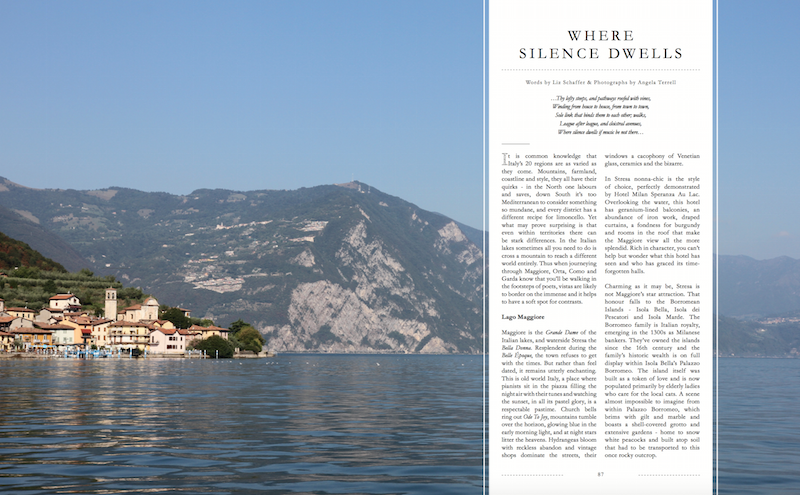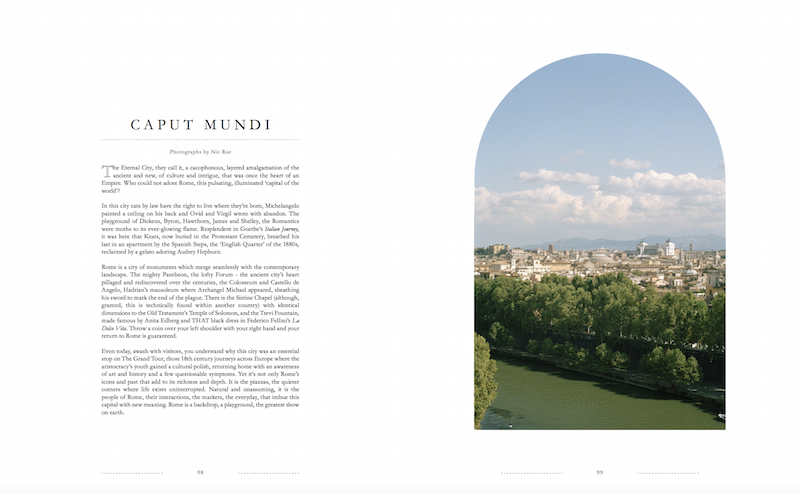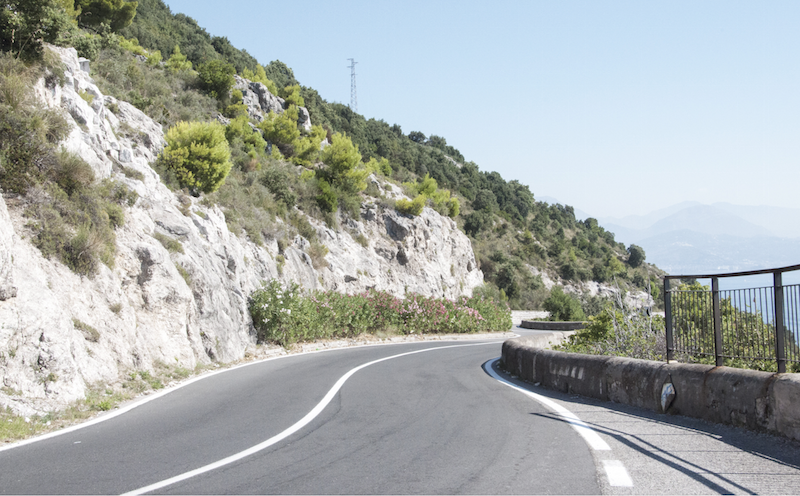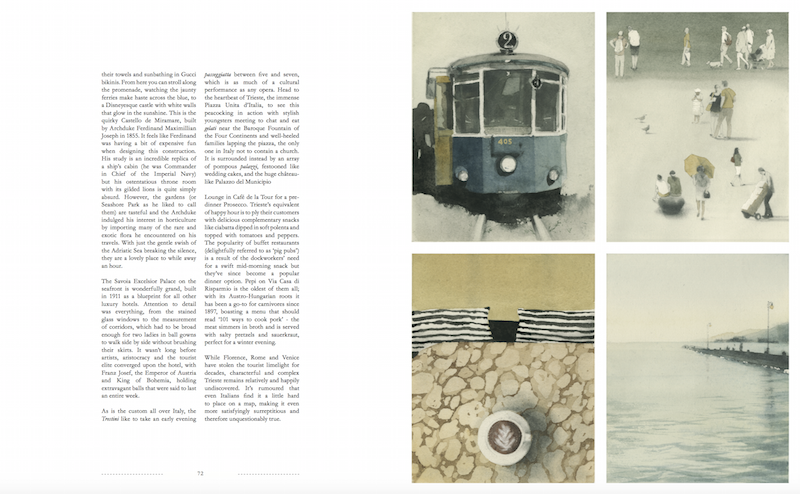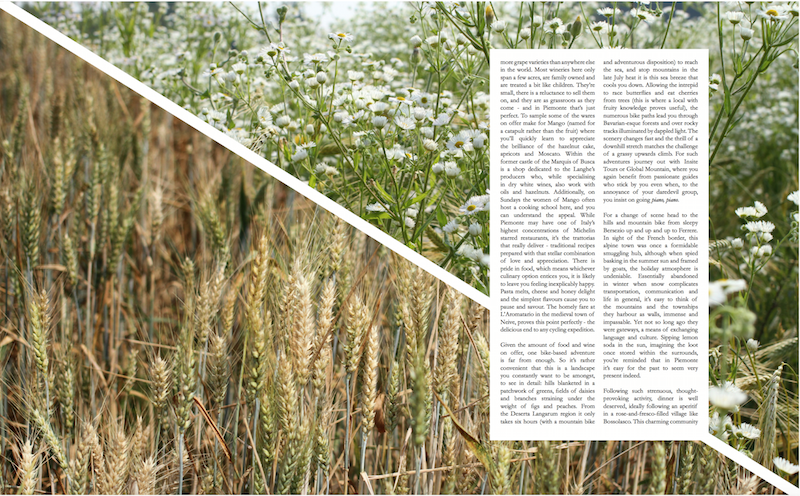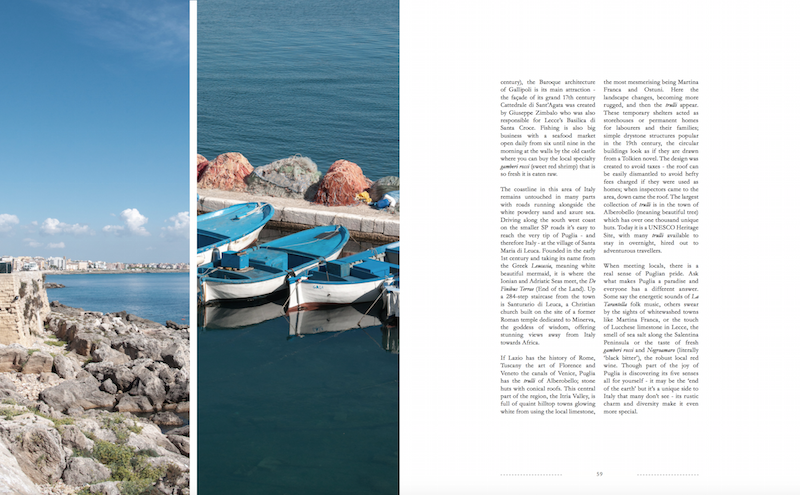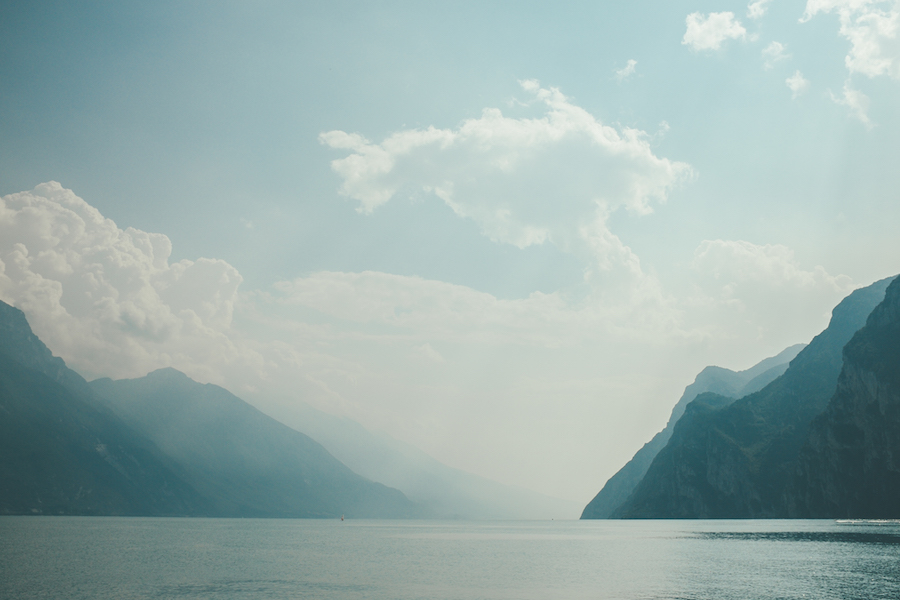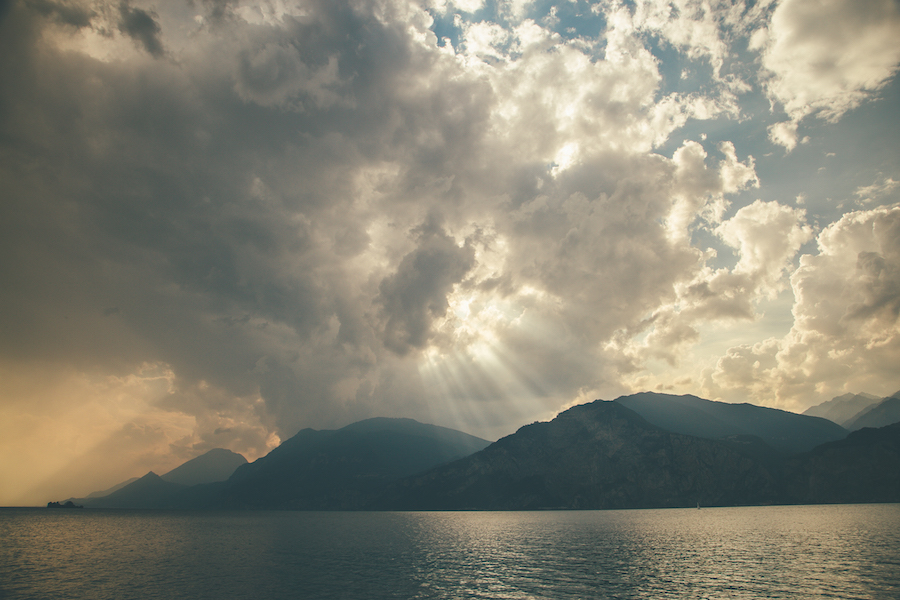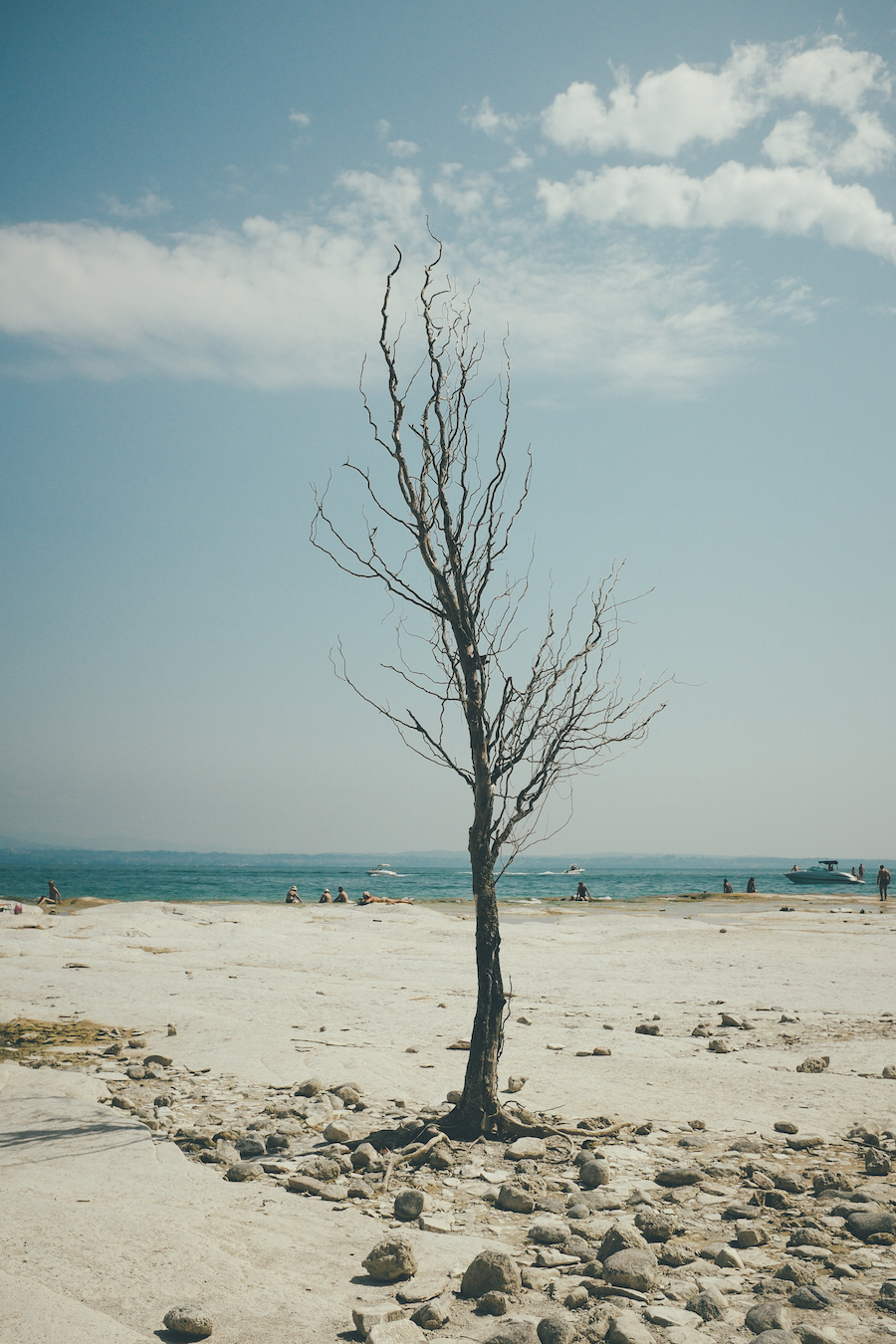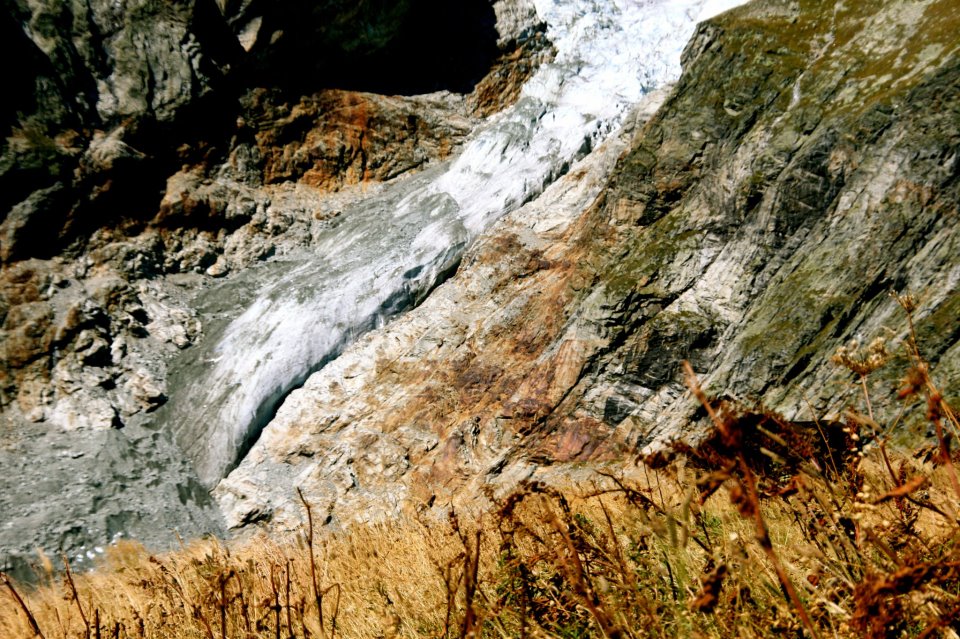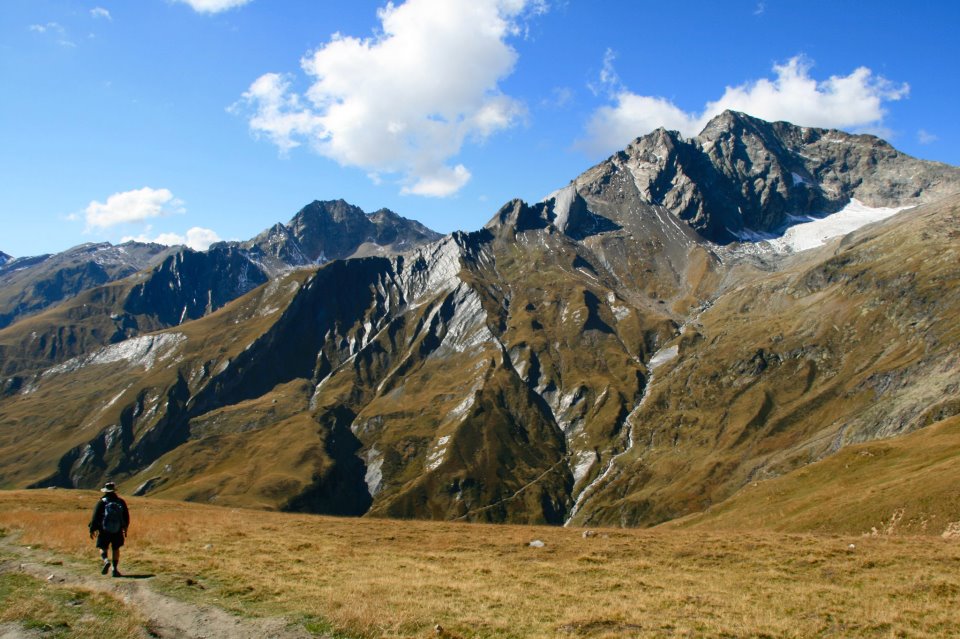Chasing the vintage Fiat 500
Food, Life and Love with Antonio Carlucio
Jewel of the South
Cogne
Etna Moments
Words by Ed Henry and Photographed by Renae Smith.
On an island off Italy’s boot you quickly learn that if it’s not Baroque, don’t fix it.
When you think of Sicily, what comes to mind?
The answers I received were split between those who hadn’t travelled there and those who had. The former would mumble something vague or hesitant - “it looks nice,” or “the birthplace of the Mafia right?”. The latter would gush a living eulogy for an island that captures the imagination and remains lodged there well after the holiday’s end. Now that I was visiting, I was suddenly a member of this club, the cognoscenti if you will. And in keeping with the island’s own warmth and generosity I will extend an invite, or provide a window at least, into this rocky triangular mass in the Mediterranean.
A whiff of context: Italy and I have history, from a grandfather who called it home to friends scattered across the North. I have had the privilege of seeing this country from many angles and so my objectivity is questionable. But this was my first jaunt to Sicily, and for my (much) better half, her first trip anywhere south of the Alps.
Sicily is a place that Italian mainlanders very consciously visit, such is the distinct identity that the island enjoys. Not forced, it is forged through the rich history that simply doesn’t exist anywhere else. Sicily is distinctly Italian, and the architecture and gastronomic traditions are on full display, alongside other axiomatically Italianate amusements. But it’s been combined and entwined with Greek flavours and Arabic influences, not to mention Spanish rule, and much more besides. I say this not to intimate a deep knowledge of the island but because it’s there for you to see, smell and taste. To the visitor more accustomed to the waterways of Venice or the sleek Milan cityscape, Sicily offers a warm, rugged and almost rough embrace.
Sicily, Italy
Trains do snake their way around the island, but your own set of wheels is thoroughly recommended. For a fully immersive experience, we plumped for a Fiat 500 (new model), but it wasn’t available, so they gave us one with a retractable roof. Oh fine, if you must. A less composed traveller would have squealed with excitement.
From Catania on the Ionian Sea we pointed the car north and meandered up the coast to our first base: Taormina, which is in no way defined by its undoubtedly touristy centre. We used the town as a launchpad for the surrounding area, and were handsomely rewarded. I do caveat that point, and indeed all of this article, by saying that we travelled in June. Intentionally so, as the temperature is a happy 30oC at this time of the year, rather than a sweltering 40oC plus. More crucially, we avoided the period between late July and the end of August which sees the mainland descend upon the island for tanning and indulgence.
Sicily, Italy
Once installed in our apartment (more immersive than a hotel), we spent days visiting nearby beaches, sunning ourselves on Spisone, sea kayaking around the grottoes and walking up Isola Bella. Later we trundled down the coast to Siracusa, a functioning commercial city. Whilst it does have spots for archeology enthusiasts, and some top eating experiences, the big draw is the historic centre, Ortigia. To be blunt, it’s stunning. An afternoon walking around Ortigia’s backstreets is sheer joy, the main square a deep white, dominated as it is by the Duomo - I didn’t think places like this existed anymore. Ortigia itself is an island off an island, so if you walk for much more than ten minutes in any direction you’ll come upon the azure abyss that surrounds it.
At this point you think you’re aesthetically there, at the apotheosis, and that you can relax with a cool beer. Not so, or Noto so - if you will. A winding 40 minutes’ drive away is Noto, which would scream UNESCO heritage site, if only it weren’t so tranquil. The cathedral gleams in the Mediterranean light, the numerous supporting cast of churches and palaces resplendent under the sun. It’s a visual feast, and if you’re into architecture, it will probably satisfy more needs besides.
The best way to wind down from such an experience is to step into one of the local ice cream shops. Not just any gelateria, mind. Where do you think the best gelato is? That place in Soho? Don’t joke. San Crispino in Rome? It’s up there. But the number one and number two are within 50 metres of each other in Noto. A locale called Caffè Sicilia sounds like a tourist trap, but it’s not. It does to your mouth what the rest of the town does to your eyes. I’ll leave it there, and say to you go. Go.
The inner island is matched in beauty by what you find on the coast - picturesque beaches lapped by clear blue waters. They all deserve a mention, but only one gets that honour. Riserva Naturale Orientata Oasi Faunistica di Vendicari, as the names suggests, is a nature reserve, one where you can walk through ancient ruins, jump (cautiously) from rocks into the cooling waves below, or tiring of that, find your own spot on the pristine stretch of coastline.
Sicily, Italy
Subsumed in the beauty of the landscape, we avoided Sicily’s cities apart from a brief drive through Catania. This city has more to offer than suicidal driving, but it’s a different trip. Its vibe is long weekend, not a week unwinding in the sun. The single greatest thing about the city however, is the elephant in the room of this piece so far. Mount Etna, which stands behind Catania, dominates the skyline up and down much of the coast, which means that you can have your own Etna moment no matter where you are as it’s visible from, well, everywhere. The classic way to take it in is from the amphitheatre in Taormina, although others prefer to see it in contrast with Catania’s urban grit. We found our Etna moment when looking down at the valleys and beaches from picture- perfect Castelmola, a hilltop town you wouldn’t believe existed until you saw it. The only thing towering over us? Etna herself. The millennial traveller is accustomed to mountains, au fait with tropical climate and quite frankly used to white sand. A volcano is a treasure of nature not often seen. If you leave Sicily in any doubt, you won’t arrive home with it; as the plane climbs into the sky it skims Etna just above her peak.
The food. Oh yes. I’ve saved the food for the end so as to contain it, for memories of my trip, as with much of life, are marked, or should that be stained, by what I ate at the time. The food here excites and subverts and is as much of an experience as any of the vistas. You farewell Sicily with a new found love of aubergines, you’ll remember how wonderful tomatoes can actually taste and best of all, you’ll discover that fish needn’t be dry, bland and deep-fried.
Sicilian food is independent of mainland Italian cuisine. The two styles are not unrelated, but think of Sicilian food as a proud cousin. The same historical and imperial forces responsible for Sicily’s formation, have brought similar import to its cuisine. This is not to say that classical Italian strands are not evident: my travelling companion’s dish of the tour was the definitive Pasta alla Norma served at La Piazzetta in Taormina. Named after the work of one of Catania’s most famous sons, this dish became almost a standard for restaurants up and down the east coast.
Not every meal can be indulged in print, but it would be remiss not to pull out a couple of highlights. Osteria da Carlo was a gem hidden in Ortigia. We had the legendary six- course fish menu, for the grand sum of €35, washed down with the best bottle of €5 house plonk I’ve ever swilled. If it swam in the sea nearby, then it was on that menu. You order sea bass, and not one, but two of the fullest, freshest fillets turn up, naturally served in the juice of the finest fruit Sicily has on land: lemon.
Flavours on the island, like the setting, shall not date. Consistency, textures, even viscosity are all different, all exciting. Entirely Sicilian. As Sicily’s perhaps most prominent literary son, Giovani di Lampedusa, proffered: “Sicily is Sicily - 1860, earlier, forever”. Long may she be, and proudly too. More’s the better for me, as I will be back soon.
Sicily, Italy
Sicily, Italy
Sicily, Italy
Piedmonte, Italy
Here's a little piece we put together for Need Supply Co all about the wonders of undiscovered Italy. . . .
Lodestars Anthology - Italy
 With our Italy issue set to arrive back from the printers next week, we thought it would be grand to a) give you a little sneak peak of what lies within the magazine and b) let you know where copies can be ordered.
With our Italy issue set to arrive back from the printers next week, we thought it would be grand to a) give you a little sneak peak of what lies within the magazine and b) let you know where copies can be ordered.
For UK, EU and US shoppers (and for Australian's who are reluctant to wait an extra two months) you can order copies from:
For more patient Aussies and New Zealanders there is the subscription service offered by
Just click on the above names and you shall be taken straight to the relevant site.
Of course if you have any questions or are after back issues don't hesitate to get in touch be emailing info@lodestarsanthology.co.uk and we'll lend a helping hand.
Simon Bray
 While travelling upon Lake Garda for the Italy issue of Lodestars Anthology (out later this month) we first noticed the photographs of Simon Bray, who just so happened to be snapping the same subject as us. Drawn to his beautiful use of light, and ability to make this perfectly popular corner of Italy seem amazingly calm, we had to ask a few questions about his work ... and Italy of course.
While travelling upon Lake Garda for the Italy issue of Lodestars Anthology (out later this month) we first noticed the photographs of Simon Bray, who just so happened to be snapping the same subject as us. Drawn to his beautiful use of light, and ability to make this perfectly popular corner of Italy seem amazingly calm, we had to ask a few questions about his work ... and Italy of course.
What do you love about photography?
I have a desire to create images and often I won’t be able to rest until I’ve taken them, so in that sense, each image serves it’s purpose in feeding that personal need; it’s a scratch that needs to be itched, very therapeutic. At the same time, I know that each image holds a varying level of potential. I love that an image can evoke something in a person, a response or an emotion, that will be so vastly different to what I, as the photographer, see, or what anybody else might see in it. We’re all made up of a combination of our own history, cultural influences, our social upbringing, the places that we’ve been and the people that we’ve met. That can mean that an image that I’ve taken may mean absolutely nothing to you, but there might be one image, for reasons known or unknown, that you connect with, that sparks something, a thought or memory, or that you just enjoy visually because of the colours, tones, composition or subject matter. Each image has that potential power.
I’ve also been thinking about imagery and timescales recently. Photography is a long game. I’ll often think about the fact that the images I take may well outlast me, and that as much value as there is in viewing them now, I hope that the generations that supersede me will find them interesting in many years to come.
Can you remember the first photograph you took?
Not as such, although the first time I got really excited about an image was a photograph I took of a hummingbird hawk-moth in the French Alps on holiday. I was probably in my early teens and using my first 35mm film camera. Getting the film developed and looking at the print, and seeing that I’d somehow managed to capture it’s motion and movement felt quite incredible.
What inspires your work?
I’d like to say that each location I work in acts as the pure influence for the images I create, but I know that’s not totally true. I’ll certainly feed off the elements before me, but there are so many subconscious factors behind the decisions I make, if I’ve seen a similar image before I’ll need to decide whether I want to embrace that and create it for myself, or try something different. I suppose everything I read about photography, and all the images that I take in will influence my sense of how to portray subject matter in both potentially helpful or unhelpful ways. To a greater extent, it’s the light that will inspire me. I won’t often stop to make a landscape picture except for the fact that the light is particularly interesting, and my discernment for that is certainly something that has developed over the past couple of years and something I’m trying to encourage.
How would you define your style?
One of the most significant factors is space. Living in a city, I’m constantly yearning for greater physical space, so once I’m somewhere that I feel that greater sense of freedom, I can’t help but let that come through in the images, which often manifests itself in the form of negative space using sky or water. I was discussing this recently with a friend, how I won’t be proactively making decisions about an image as I take it. Previously, I will have taken a lot more time to consider the image I want before I shoot it, perhaps for technical reasons, or just slow decision making, but now it seems to come far more naturally and I’ll work quite quickly. I think that’s how my personal style will be encouraged, simply through the practice of taking images, although I still feel I need to slow everything down a bit! I’m trying to develop my understanding of how to create more concise images that dig deeper, to avoid simple surface level imagery and I’m sure taking more time to consider each image will aid that.
Does travel influence your work in any way?
Absolutely. I live in central Manchester, which really doesn’t provide much to feed my desire to create landscape images, so it’s almost a necessity for me to travel. I really savour the opportunity to explore a new location with my camera. There’s an excitement that comes with visiting a certain place in a certain season and capturing it in it’s current state, knowing that other photographers will visit later in the day, week, month or years later and see it in a completely different way. Landscapes evolve and the light makes all the difference. I’m not usually able to return on multiple occasions, but in many ways it’s a privilege to preserve a place on any given day through my images, it forces me to work with the environment I’m in and create in the moment, avoiding any preconceptions of what I’d like to create, which can be distracting.
What makes Italy such an interesting subject?
It’s a popular holiday destination for a reason! The combination of the the incredible food, weather and variety of scenery make it such a special place for me. The area surrounding Lake Garda is an alpine wonderland. Exploring the mountains and lakes was such a privilege, so many breathtaking views, and even though it was warm, everything was washed in this amazing blue light, probably the moisture in the air, it made for some stunning scenes to photograph. I’d recommend visiting in the off seasons in order to appreciate the true sense of space without the crowds of tourists, because there are some stunning small towns and villages, where I could just sit and watch the world go by for days with a glass of wine and some fresh pasta!
Has there been a particularly memorable project either past or present?
I’m currently working on my first long-term project, a collaboration with a Manchester based artist called Tom Musgrove. We’re visiting a selection of the most stunning locations across the UK, and each creating a piece for each location, which we’ll be exhibiting side-by-side at a show in the autumn. It’s taken nearly 2 years already, and it’s been great to visit stunning places that are only a few hours away. Our most recent trip to Glen Coe in Scotland was just incredible, the scenery, the light, the people we met, the conversations it sparked, the whole experience was very memorable. I also get to watch my work evolve, which is very important, but the most influential element has been the development of my relationship with Tom, the opportunity to discuss the discourse of our work, our varying methods and explore the motivations behind each piece we create. Tom takes his time on each trip to sketch, which has really forced me to slow down and appreciate the changing elements and light within the landscape.
What is your dream subject?
I don’t know if I have one at the moment, maybe that will develop over time. For now, any scenic location that I have the chance to explore with my camera in my own time would be a dream come true! Every commission I receive or project that I set out to do furthers my work, it’s a fresh challenge that I want to fully embrace. I still feel like I’m defining my practice and as a result, my style or imagery, maybe one day that will feel more concrete, or maybe I’ll just keep trying new things!
A selection of Simon's landscape work is up at www.simonbray.co.uk and can also be spired on Instagram.
The Chaos Older Still
to Rome, la città aperta
The light here is ancient, the chaos older still— buzzing across the Appian Way, but one of the every that lead to the city eternal, suspended, you can hear her muffled roars, traces of a hungry mouth with frazzled mane a cracked throat craving aqueducts defunct, now long dry and thistle crowned. What could appear as more bereft than landscapes of rubble, marble stripped and sun burnt, awaiting still another ravaging? Yet therein is her secret held: there remains in these fabled ruins, bequeathed to us as though our coming had been foretold, a quivering palpable beneath the footfalls of our approach waiting to be given voice and body— for a city is never completed, only inherited.
Poem by David Warren Grunner and Photographs by Nic Rue.
Tour Mont Blanc
Passing through Italy, France and Switzerland and circling the mighty peak that is Mont Blanc, the aptly named Tour Mont Blanc is one of the world's great walks. Passing scenes capable of inducing wobbly knees, a mix alpine cottages, glacial remains, snow capped mountains and valleys that stretch into eternity, the walk, which takes a week to complete, is for those predisposed to wanderlust. Aided by a mule called Coco and fuelled by a diet of bread and cheese (the wine would prove too heavy to carry), my own venture around the mountain has been etched into my memory - the thick forests, mirror-like lakes and towns abandoned by time are not something you ever really forget.















